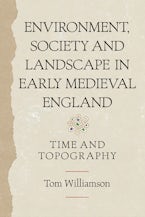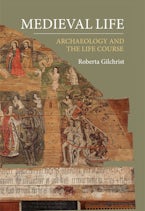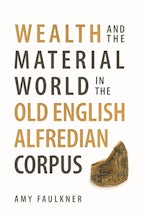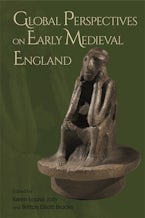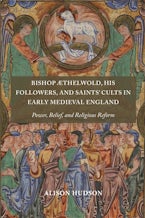
Title Details
324 Pages
24 x 17 cm
4 b/w, 45 line illus.
Series: Anglo-Saxon Studies
Series Vol. Number:
35
Imprint: Boydell Press
Burial, Landscape and Identity in Early Medieval Wessex
- Description
- Contents
- Reviews
Multi-disciplinary investigation of Anglo-Saxon funerary traditions.
Burial evidence provides the richest record we possess for the centuries following the retreat of Roman authority. The locations and manner in which communities chose to bury their dead, within the constraints of the environmentaland social milieu, reveal much about this transformational era.
This book offers a pioneering exploration of the ways in which the cultural and physical environment influenced funerary traditions during the period c. AD 450-850, in the region which came to form the leading Anglo-Saxon kingdom of Wessex. This was a diverse landscape rich in ancient remains, in the form of imposing earthworks, enigmatic megaliths and vestiges of Roman occupation. Employing archaeological evidence, complemented by toponymic and documentary sources and elucidated through landscape analysis, the author argues that particular man-made and natural features were consciously selected as foci for funerary events and ritual practice, becoming integral to manifestations of identity and power in early medieval society.
Kate Mees is a British Academy Postdoctoral Fellow in the Department of Archaeology, Durham University.
Burial evidence provides the richest record we possess for the centuries following the retreat of Roman authority. The locations and manner in which communities chose to bury their dead, within the constraints of the environmentaland social milieu, reveal much about this transformational era.
This book offers a pioneering exploration of the ways in which the cultural and physical environment influenced funerary traditions during the period c. AD 450-850, in the region which came to form the leading Anglo-Saxon kingdom of Wessex. This was a diverse landscape rich in ancient remains, in the form of imposing earthworks, enigmatic megaliths and vestiges of Roman occupation. Employing archaeological evidence, complemented by toponymic and documentary sources and elucidated through landscape analysis, the author argues that particular man-made and natural features were consciously selected as foci for funerary events and ritual practice, becoming integral to manifestations of identity and power in early medieval society.
Kate Mees is a British Academy Postdoctoral Fellow in the Department of Archaeology, Durham University.
Introduction: Perspectives, Approaches and Context
Monument Reuse and the Inherited Landscape
Topography and Ritual Life
'Britons and Saxons'?
Land Use, Territoriality and Social Change
The Church and the Funerary Landscape
Conclusions
Appendix: Gazetteer of burial sites in the study area, c. AD 450-850
Bibliography
Monument Reuse and the Inherited Landscape
Topography and Ritual Life
'Britons and Saxons'?
Land Use, Territoriality and Social Change
The Church and the Funerary Landscape
Conclusions
Appendix: Gazetteer of burial sites in the study area, c. AD 450-850
Bibliography
"[An] invaluable resource for anyone seeking to use evidence of burial in the landscape" EARLY MEDIEVAL EUROPE
"A detailed and thoughtful book...A stroke of Mees' brilliance is the use of microtopography, a novel approach that yields some intriguing inferences about the interplay between landscape and funerary ritual." JAEMA
Hardcover
9781783274178
May 2019
$125.00 / £85.00
Ebook (EPDF)
9781787445581
May 2019
£24.99 / $29.95
Title Details
324 Pages
2.4 x 1.7 cm
4 b/w, 45 line illus.
Series: Anglo-Saxon Studies
Series Vol. Number:
35
Imprint: Boydell Press


